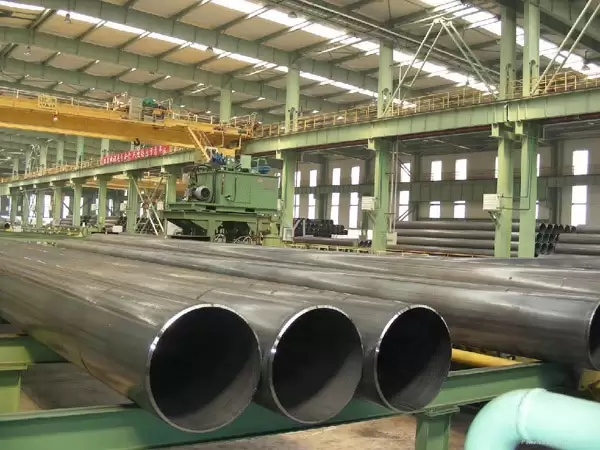The JCOE forming process is known for its efficiency in producing large-diameter LSAW steel pipes with high precision and quality welds. These pipes are commonly used in applications such as oil and gas transportation, water pipelines, and structural construction. The JCOE LSAW steel pipe forming process involves several key steps in the following, read on to learn more.

J-ing (Bending):
The process starts with bending the steel plate into the shape of a "J." This initial bending creates the curvature of the pipe and sets the foundation for subsequent forming steps.
C-ing (Curling):
After the J-ing step, the bent plate is then curled into a circular shape. This curling process transforms the J-shaped plate into a C-shaped one, forming the preliminary shape of the pipe.
O-ing (Opening):
Following the C-ing step, the pipe is expanded or opened to achieve the desired diameter. This opening process involves pressing the curled plate into a circular form, creating the O-shaped pipe. The expansion is carefully controlled to achieve the specified dimensions.
Expanding:
The final step in the JCOE process is expanding the O-shaped pipe into its intended size. This is achieved by applying hydraulic pressure to enlarge the diameter further and shape the pipe to meet the required specifications.
Pre-Welding:
Before welding, the edges of the opened and expanded plate are pre-welded. This preparation ensures proper alignment and fusion of the edges during the subsequent welding process.
Internal and External Welding:
The longitudinal seam of the LSAW pipe is welded using the submerged arc welding (SAW) process. The welding is performed both internally and externally, resulting in a continuous, high-strength weld along the length of the pipe.
Ultrasonic Testing:
After welding, the LSAW pipe undergoes ultrasonic testing to detect any potential defects or imperfections in the weld. This testing ensures the quality and integrity of the welded seam.
Pipe End Beveling:
The ends of the LSAW pipe are beveled to facilitate welding when connecting pipes or attaching fittings. Beveling helps create smooth and properly aligned joints.
Final Inspection and Coating:
The completed LSAW pipes undergo a final inspection to ensure they meet the specified standards. Depending on the application, pipes may be coated with anti-corrosion materials to enhance their durability and resistance to environmental factors.